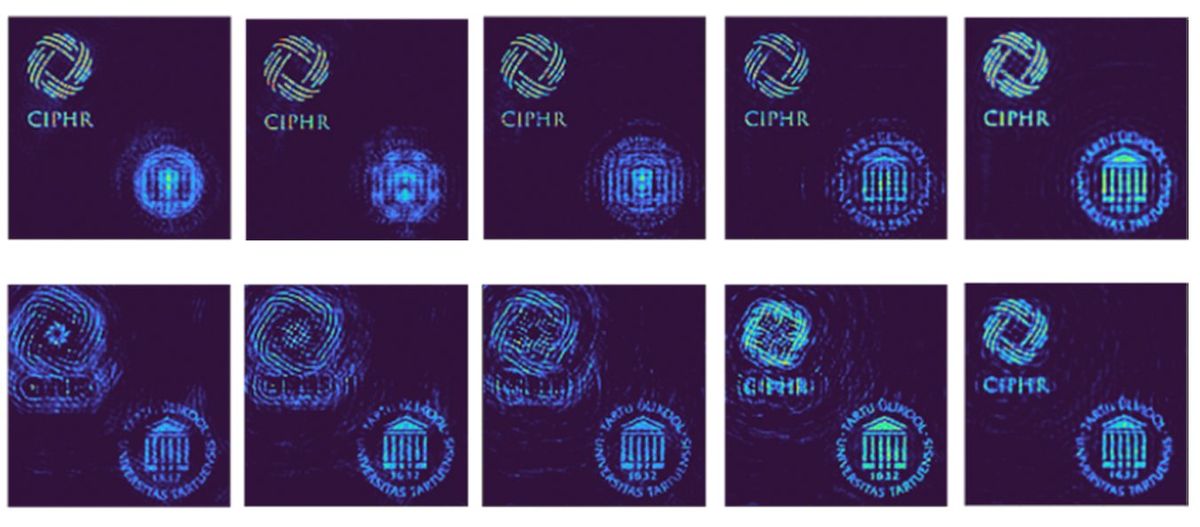Smartphones and movie cameras might one day do what regular cameras now cannot—change the sharpness of any given object once it has been captured, without sacrificing picture quality. Scientists developed the trick from an exotic form of holography and from techniques developed for X-ray cameras used in outer space.
They detailed their findings online on 20 September in the journal Optics and Lasers in Engineering.
A critical aspect of any camera is its depth of field, the distance over which it can produce sharp images. Although modern cameras can adjust their depth of field before capturing a photo, they cannot tune the depth of field afterwards.
True, there are computational methods that can, to some extent, refocus slightly blurred features digitally. But it comes at a cost: “Previously sharp features become blurred,” says study senior author Vijayakumar Anand, an optical engineer at the University of Tartu in Estonia.
The new method requires no newly developed hardware, only conventional optics, “and therefore can be easily implemented in existing imaging technologies,” Anand says.
It’s based in part on what’s known as incoherent holography. Standard holography generates holograms by illuminating objects with lasers, whose light is coherent, meaning all the light waves overlap essentially perfectly. When laser beams are made to interfere with one another in precise ways, the interference pattern encodes a three-dimensional representation of an object—a hologram.
Incoherent holography relies on normal light. One way it can work is by splitting light from a scene into two parts, making them interfere, and generating a hologram, all with the aid of computer processing. Incoherent holography may become useful when, say, it may prove dangerous to light up living tissue with lasers.
The new study combines recent advances in incoherent holography with a lensless approach to photography known as coded-aperture imaging.
An aperture can function as a lens. Indeed, the first camera was essentially a lightproof box with a pinhole-size hole in one side. The size of the resulting image depends on the distance between the scene and the pinhole. Coded-aperture imaging replaces the single opening of the pinhole camera with many openings, which results in many overlapping images. A computer can process them all to reconstruct a picture of a scene.
Coded apertures are essential for imaging extremely short wavelengths, which go right through standard optics. Thus, coded-aperture imaging is often used in X-ray and gamma-ray cameras on space missions.
Incoherent holography and coded-aperture imaging evolved as relatively independent fields of research. Now, by combining aspects of the physical setups and the computer-processing techniques of both incoherent holography and coded-aperture imaging, it is possible to create a hybrid strategy that requires only two conventional optical elements, such as refractive lenses.
“We found a smart way to apply existing knowledge for this application,” Anand says.
The new technique records two images simultaneously, one with a refractive lens, the other with a conical prism known as a refractive axicon. The lens has a low depth of field, whereas the axicon has a high depth of field.
Algorithms combine the images to create a hybrid picture for which the depth of field can be adjusted between that of the lens and that of the axicon. The algorithms preserve the highest image sharpness during such tuning.
It’s still early days for the technique. Even with high-power lighting, noise in the detectors was high, resulting in noise during computer image reconstruction. “Advanced algorithms are needed to achieve photo-quality image reconstructions,” Anand says.
Still, Anand notes this approach promises to be simple, low-cost, and easy to integrate with existing technologies. Potential applications may include “cinematography, smartphone imaging, microscopy, and telescopes,” Anand says. “It can create flexible versions of the above existing imaging systems where one can create images with on-demand depth of field without sacrificing the sharpness of image.”
One question this new work raises is whether it is possible to tune other qualities of images after recording. “I believe that exploring the gray area connecting holography and coded-aperture imaging with incoherent light may lead to many surprises,” Anand says.
Charles Q. Choi is a science reporter who contributes regularly to IEEE Spectrum. He has written for Scientific American, The New York Times, Wired, and Science, among others.


